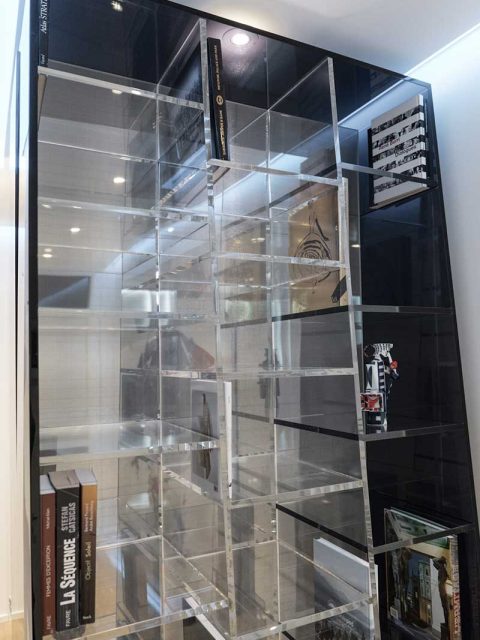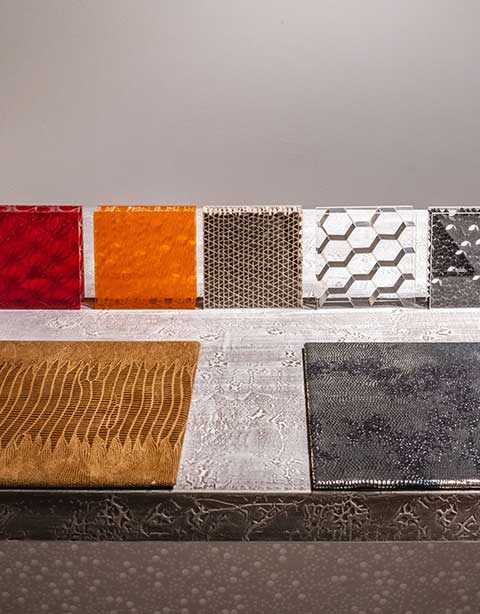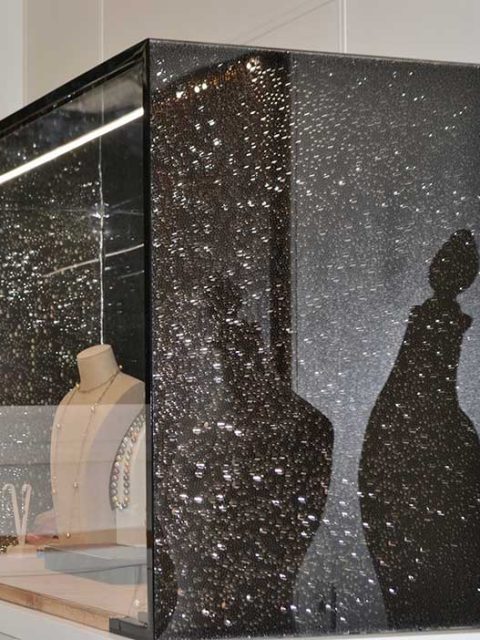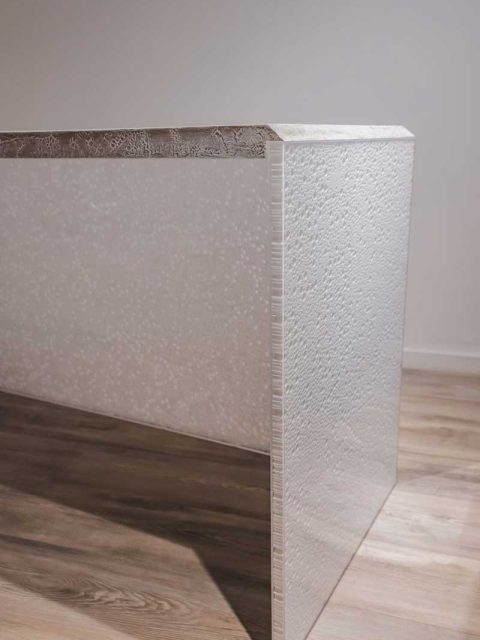Antonio Papadia was born in Lausanne and grew up in the beautiful region of Puglia, South of Italy, where he discovered metal and forge with his father’s work. When he returned to Switzerland 20 years later in 1991, he naturally started his career in the metal construction field.
From there, he started to experiment around metals, as well as different new materials. He created and made many pieces himself before deciding to develop this activity and exhibit his work to the public.

«Today, with over 20 years of experience, I have turned my passion into a job I love! I create unique pieces for commercial or private spaces. My sense of innovation and aesthetics is expressed through experimentation with original shapes, designs and associations.
I recently developed several concepts out of resin and plexiglas that I had the opportunity to exhibit at the ArtECasa Fair in Lugano (2016) and Habitat et Jardin in Lausanne (2017)».
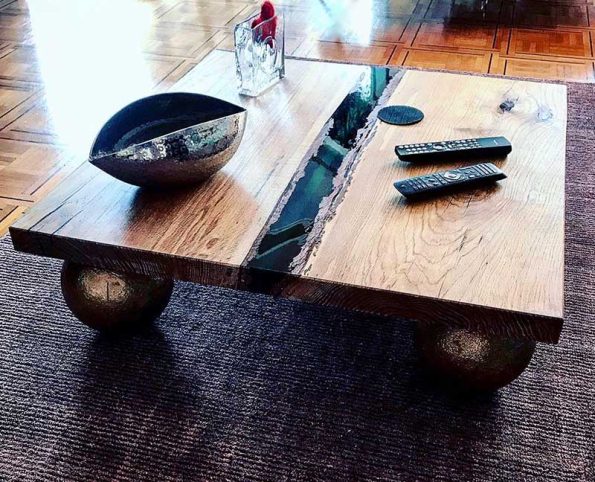
Inspiration and creativity that come together at the end to create your profession. Why did you need fifteen years to formalize it?
As an ambitious and demanding person with myself, I always place the bar high and then reach the goal. I come from a blacksmith generation and I am proud of it. I am also a self-taught artist, without any university degree such as the Politecnico di Milano for ex., who wants to reach a certain type of clientele in the world of luxury. I have always known that I have the skills, but I also had to make many sacrifices and invest both a lot of time and money for development and exhibitions. I am succeeding thanks to my passion and perseverance. Passion, strength of character, knowledge and creativity make you face any obstacle in life.

Your training comes from studying techniques in metal construction. What does this add to the way you work?
Indeed, with training and experience, I have acquired a strong knowledge of materials, especially metal, and then developed precision, art and creativity. When I have to design, I know technically which material can be adapted to another, the right furniture, the perfect color. I have an instant and natural vision of the 3D perspective and I naturally imagine the result of a project in its context, and this is a real asset I believe.

Your references in design are Tom Dixon, Gaetano Pesce and Antonio Citterio. What did you like the most about each one and what did you learn from them?
Tom Dixon: an autodidact and former blacksmith just like me. He inspires me and I see myself again, he almost always expresses himself by including metal in all its forms.
Gaetano Pesce: an eternal child, a great master of creativity, I see myself a lot. He always experiments with new techniques and unusual materials, he is an artist at 360 °. The UP 5, nicknamed the Mamma Mia armchair, acquires its shape only after being freed from its vacuum packaging., Made with injection polyurethane, only Pesce can venture into these techniques.
Antonio Citterio is a Master of the epure and absolute sobriety of perfect and linear geometry.
What I learned from them:
Gaetano Pesce: his art and his graphic imagination and theatrical staging, overflowing almost supernatural.
Tom Dixon: the strength of character, not being a graduate like me , but simply self-taught, and I see myself in him even though we have two different styles.
Antonio Citterio, the refinement of the materials chosen for each singular furniture of his design.
What qualities must an interior designer have to be good?
Knowledge of the history of design, not following trends but creating them, experimenting with new materials, being creative, ambitious, using materials that have a history with other very modern ones and finally being open to all positive and negative criticisms, and listening carefully to the customer.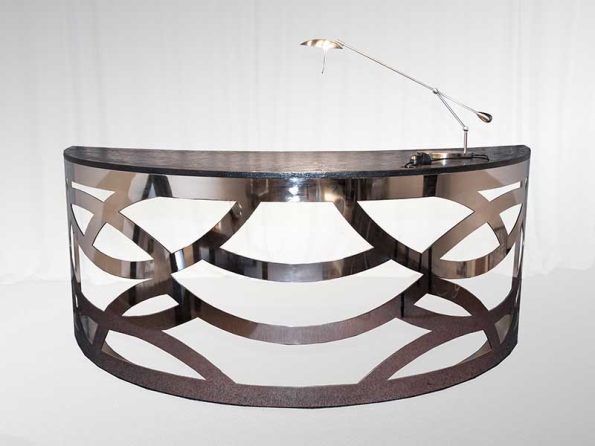
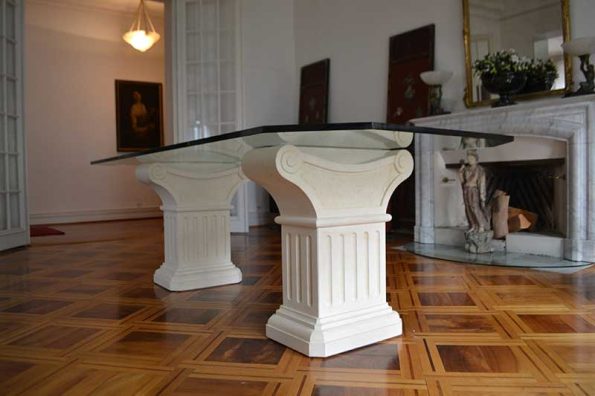
What is the first thing you do when you have a client? What is your work methodology?
The first thing I do: I observe everything that surrounds the various spaces, furnishings and decorations that I see at the customer’s. I listen carefully and pay a high attention to everything that the customer can tell, not only concerning the project but also their artistic tastes, the favorite materials, the colors or shapes, but above all their lifestyle, hobbies, and philosophy of life. This enables me to create something unusual that can pleasantly surprise them and win their trust.
 What different types of environments can be created for the same space?
What different types of environments can be created for the same space?
Combining the elegance of antique style with ultra-contemporary and modern design. Combining basic and traditional material with complex and new materials. You just need to know how to dose and stay sober using no more than three shades of colors and mix angular geometry with round shapes.
What style and decorative objects do you like to use and what is your personal stamp?
I love furnishing accessories and furnishings made with transparent materials.
Glass: blown, melted, thermoformed, associated in the mass with other materials and pigmented with different colors, makes me feel the magic.
Plexiglass: it is a material with infinite processes, it can be thermoformed like glass, pigmented in the mass, you can incorporate very small objects, such as the hands of a clock or a needle and they will be seen through perfectly for the simple reason that plexiglass is absolutely the most transparent material there is, provided you use the top of the range.
Resin: there are many types of resin depending on use. It is the ultimate material to incorporate almost all materials and objects, for example wood, fabric, marble, metal as long as they are porous, and also pearls, diamonds, etc… It can be pigmented in the mass, it can be blended with a thousand colors.
My personal stamp is the design composed of curves, always inserting a particular texture, which assimilated to different materials, can create the magic of a precious and unique object. My base material is obviously metal on all its facets, it is sentimentally the base material.
Should an Interior Designer be recognized when viewing his work or do he thinks it is a limitation to have a defined style?
Yes, a designer must recognize himself when he sees his work! Since the start of the conception of a piece of furniture or accessory, the whole project must enhance the designer’s creativity. For example, at the very beginning of a project, I must feel excited. When working on it, I will have to be highly convinced of the choice of the shape, texture of the object etc. At the end of the conception, I must love the object unconditionally before I propose it to the customer. At this time, I will expect their instantaneous reaction to be a Wow, and see in this reaction the expression of all the emotions I have communicated through the object! If it doesn’t happen, I redesign it.
Do you prefer to work in hotels or in private homes? What differences are there?
I have never furnished a hotel yet, I would like it very much and I am convinced that with my experience, my creativity and the new materials I have available, I would do a great job technically and graphically.
I have done light improvements for a bar. In 2019 I also furnished a workshop/showroom of a pearl and jewelry wholesaler in Geneva, inserting traditional materials (pure white lacquered wood) with ultra-contemporary materials and luxurious coatings, such as deer. I have furnished luxury homes for individuals, which I could not exhibit with photos because they are confidential for customers.
The difference between a public and a private place is that in a hotel or restaurant, you can be freely creative, but you must absolutely follow the most restrictive regulation for safety and fluidity of passage. For a home you have more creative freedom.

What project that you have not done yet would you like to do?
I have always wanted to furnish luxury shops such as jewelers, clothing stores, refined restaurants of renowned chefs and so on. Public places have much more visibility to be known and rewarded for your work.
With a private place, I love the direct contact with the owner and their family and the opportunity to build a relationship. My clients often become good friends! However, I have no preferences between a public and a private place, I like to express myself at 360 °. I love my passion, it has always been the essence of my creativity.



